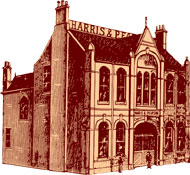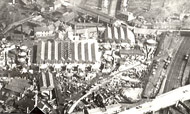
|
|
|
|
|
|
Home | Company
History | The
Office Building | Recollections | Family History | History of Firebricks | The Restoration Project | Conserving
Historic Buildings
|
|
The History Of Fire Bricks (Contributed by John Cooksey)The Manufacture of Refractories First the term ‘refractories' must be explained. The use of the word ‘firebrick' is preferable but this would not be technically correct. If brick is taken as the shape and size of a normal house brick, i.e. 9”x 4.5” x 3”, these would only represent about 15% of all refractories made. The rest would be made up of articles ranging in weight from a few kilos to several hundred kilos. The making of bricks has been an industry for over 5,000 years, but the making of fireclay related articles only about 250 years. The way in which refractories and building bricks are made have a few important differences, mainly the clay and the way it is extracted. Black Country fireclay, with one exception, was always mined, blasted out between and below the coal measures normally between 90 and 400 feet, The exception was Doultons opencast at Saltwells near Netherton where nearly a million tons were opencast in 52 years. It is now a fine nature reserve.. Red brick clay for this area is called Etruria marl and that was and still is extracted by the opencast method. Big holes in the ground were always referred to as Marl Holes in the Black Country . The area has just one marl Hole left; any other works that require marl have it brought in. Blue bricks are also made using Etruria marl, their hard solid blue colour is achieved during their firing using a reducing atmosphere cutting down on oxygen in the kiln. Another big difference between refractory and red brick manufacture is the amounts of clays or materials used in their making. Building brick would require three at the most, the number used making refractories could be a mixture of as much as 38. This was the case at Harris & Pearson's yard at Silver End Works, and this does not include the slip casting of large heavy blocks for the container and float glass industries that required additional clays and chemicals. The ways in which bricks and blocks are made are many: hand moulded with either slop moulding or semi stiff clay, pressed singly or multi pressed, wirecut, slipcast, or compressed air ramming. |

Aerial View in 1928 |
John Cooksey's Book |
© Copyright WMHBT